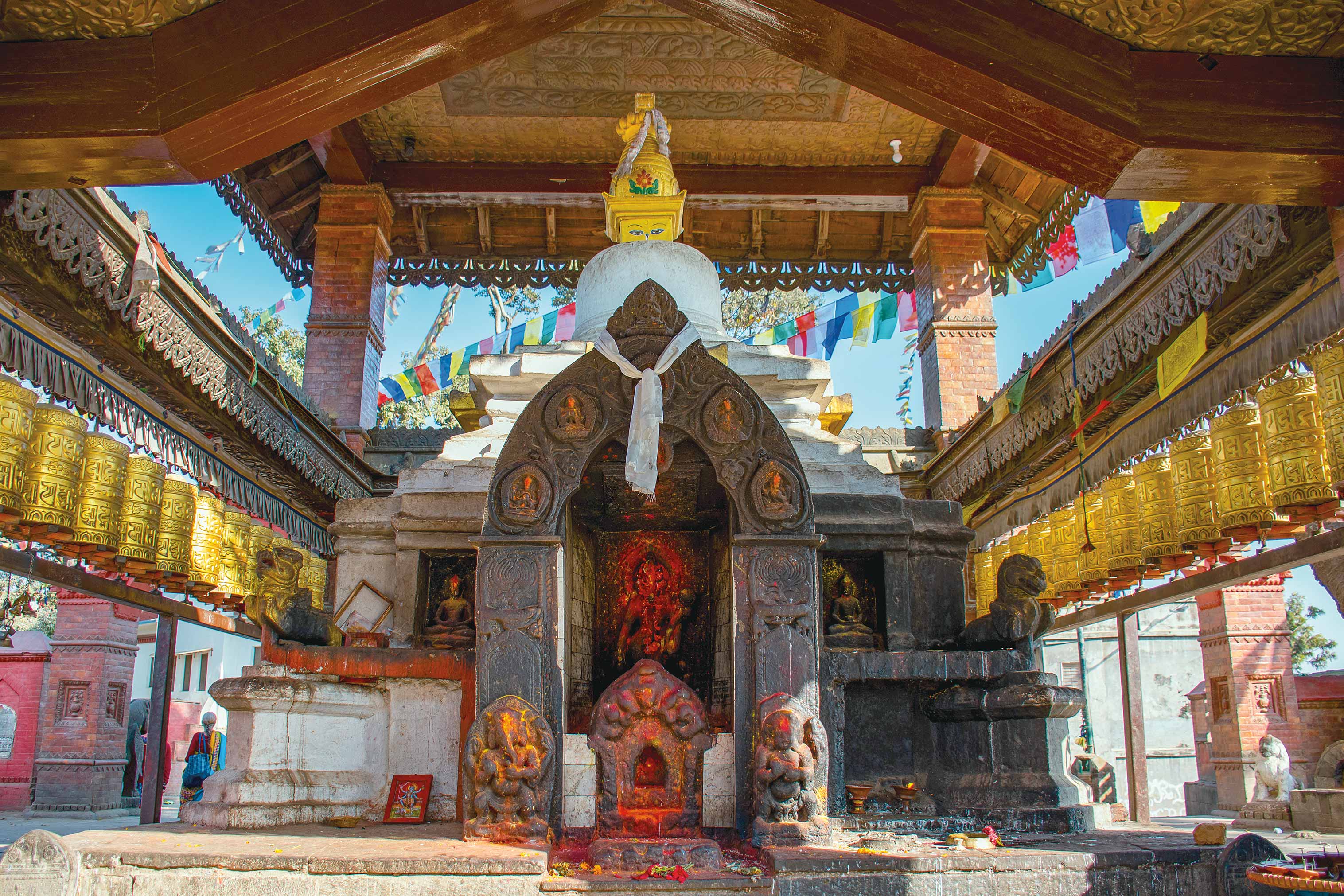Family and culture is at the heart of Thagu Chhen: A Cosy Home, boutique apartments in Bhaktapur for the modern traveler.
Dogs howl in the distance. The large palace square, where the elderly had been practicing their hymns to the beat of cymbals and temple bells during our dinner, is suddenly silent. But it’s a comfortable silence, like the place has returned to its original state of serenity. The lights in the square itself are dimmed, as if to let the bells, windows, wooden pillars and bricks sleep. A policeman stands guard, but his radio is on.

Minutes away from this historic courtyard, another story is unfolding. About a family that lived here in Kathmandu’s terracotta-toned town of Bhaktapur and then moved away. About ancestral property and a piece of unused land in the middle of the bazaar. And about coming back and re-engaging with their own. Let’s call this story Thagu Chhen, a cosy home, which is what the boutique apartment building that stands on that piece of land today is called. Thagu Chhen is Newari for one’s own home.

With the sun behind the hills and a pleasant breeze blowing, Shailaja Pradhanang, the architect and owner of Thagu Chhen, welcomed us with khada, tika and a cold beverage on a rainy June afternoon. Afterwards, she gave us a tour of the place. On the first landing, framed lovingly are old black and white photographs of the entire Pradhanang family – a fitting start to an experience built around family. On the landings that follow on each floor are elements of Newar life such as utensils, food and clothing. Opposite these displays, on the wall adjacent to the entrance to each apartment is a wall painting, each of them describing unique festivals that Bhaktapur is popular for.
Soon as you enter the apartment itself, you are greeted by large black wooden pillars, reclaimed from old houses. The
bricks too are reclaimed announces Shailaja, each uneven and odd sized brick carrying with it stories of its past. The wood pillars effectively separate the living area from the functional kitchen, the spacious bedroom and the modern bathroom. The use of earthy colors (cream walls, wooden stairs, brownish clay tiles) throughout the building, compliments Bhaktapur’s primary palette, and follows us indoors too. Because the building is sandwiched between two tall houses, the only light source is the large floor-to-ceiling glass window in the living area. “I know the glass windows do not follow traditional design but practicality was more important,” says Shailaja. Besides lighting up the room and allowing the breeze to come in, the window also frames an amazing view of jam-packed traditional style brick houses and abundant greenery. The little niches built into the walls of the room house small clay artifacts that represent Bhaktapur’s rich pottery culture.

A very important part of the building is its eco-friendly character. From rainwater harvesting to using grey water and harnessing solar power to using LED lights, they’ve invested smartly. “Green ideas might seem expensive but in the long run they are cost-effective, smart decisions,” says Shailaja.
At night with the apartment to myself, with the lights turned off, the street lights came in through the tiki jhya and fell on the bed like fallen stars. I thought the bed was too soft for any comfort but slept like a baby. The next morning, the included breakfast menu surprised us. Thin strips of eggs, fruit and cheese were served artfully, with tiny pancakes, tea and juju dhau. The assortment tasted as good as it looked.
A special treat awaited afterwards – a guided tour of the gallis of Bhaktapur. Through long, meandering alleys, our certified guide Rukesh answered our questions – some smart, others plain ignorant – and finally led us into a small, humid room. Mrigendra Pradhanang, no relation to Shailaja, stood in one corner, stirring a large quantity of milk with both hands.
Behind him on a floor covered with husk lay several large clay saucers in which Bhaktapur’s famous juju dhau would be made, and blankets and mattresses. “Not much has changed. I use gas cylinders now, whereas it used to be a woodfire to boil the milk,” he says simply, too modest to admit that his milk curd business is thriving. Next stop? Pottery Square – where the owner welcomed us easily into his workshop and let us play with dark clay and create oddly shaped vessels we took immense pride in.
Shailaja married into the Pradhanang family but she talks about her in-laws lovingly. Her husband, entrepreneur Ajay Pradhanang, told her she could do anything she wanted with the building’s design. Having always worked with clients’ demands in mind, it was hard at first to decide on things, Shailaja confessed. But as is quite clear from the four beautiful apartments she has created, it wasn’t that big of a problem either. As with her family that is embracing a town that its always belonged to and as with the architect embracing her duties as a daughter-in-law, Thagu Chhen too has embraced its role as a responsible example of a new way to engage with Bhaktapur and all it has to offer. And for all that, and the terrific service, Thagun Chhen, like Bhaktapur’s late evening strolls and early morning life, is a gem waiting to be discovered.









